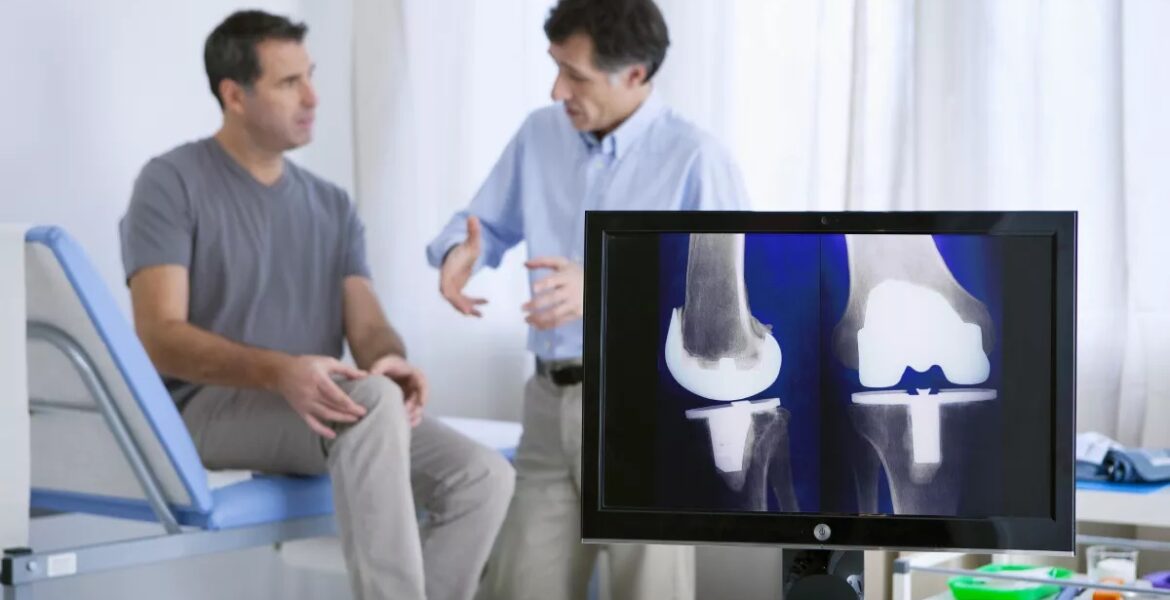Mr Andreas A. Karagiannis, Orthopedic Surgeon, Director of the 1st Clinic for Sports Injuries Metropolitan General, talks about today's most common orthopedic surgery, the procedure, the indications, the recovery period and the possible complications.
Knee pain affects the daily lives of many athletes and non-athletes. As a result, patients often wonder whether knee arthroscopy is the right solution.
Knee arthroscopy is the most frequent orthopedic operation nowadays. Using this advanced technique, orthopedic surgeons offer a minimally invasive surgical solution compared to traditional open surgery. This solution promises painless surgery, a faster return to everyday life, including sporting activities, and long-term results surpassing those of past open methods.
Despite its growing popularity and good success rates, it makes sense that many patients are unaware of the specifics of this surgical procedure and the expertise required to achieve optimal results.
What is arthroscopy?
Arthroscopy is an extremely frequent, minimally invasive surgical intervention used by orthopedic surgeons to diagnose and treat problems inside joints.
It is carried out by inserting a specialised instrument, the arthroscope, inside the knee joint, in a specific anatomical position of each joint through a small hole in the skin, which we refer to as the portal of entry.
We connect the arthroscope to a source of cold light and a camera, so the inner world of the joint is projected on the screen of a special TV to see the inside of the joint in detail and magnification. We introduce fluid into the joint, causing the joint to expand so that the tools we insert move more easily inside it, so no injury is caused to the elements of the joint; we then introduce tools the size of a small pencil (in diameter), to palpate, check and to deal with any damage to the joint.
Injuries such as meniscal tears, cartilaginous injuries, anterior and posterior cruciate ligament tears, patella dislocation, and fractures are injuries that are treated arthroscopically, with greater benefit for the patient, 24-hour hospitalisation, minimal pain and faster recovery, compared to open surgical methods.
Indications for knee arthroscopy
The method is indicated both diagnostically and therapeutically for a multitude of knee problems, such as:
- Meniscal tear
- Torn ligament
- Cartilaginous lesions in the knee
- Patella dislocation
- Dislocation fractures of the tibial spines
- Knee hymenitis, free pieces
- Knee stiffness (arthrosis), with a deficit in extension or flexion
- Unexplained knee pain that persists or pain that persists after total knee arthroplasty
Arthroscopic knee surgery treats acute injuries and sports-related injuries, providing rapid recovery and pain relief.
Its minimally invasive nature allows the experienced orthopedic surgeon to intervene precisely, minimise the patient's morbidity, achieve a solution to their problem and facilitate a faster return to their daily activities.
Rehabilitation after knee arthroscopy
The foundations of successful arthroscopic knee surgery are knowledgeable and specialised orthopedic surgeons, the necessary technological equipment, the perfect cooperation between the surgeons and anesthetist, understanding the patient's complete history, the correct pre-operative assessment of the patient, the necessary imaging control (x-rays, CT or MRI of the knee) and finally a well-structured rehabilitation program, with a special program of physical therapy, strengthening and rehabilitation in the required period of time, personalised to each patient.
Throughout this recovery period, constant contact with the therapist, continuous assessment, and individualised adjustments ensure that each patient gets the most from this surgical procedure.
Possible complications
The "arthroscopic skill", the long hours of surgeon training, the know-how, and the modern and necessary logistical equipment contribute decisively to the assurance and accuracy of an arthroscopic operation, reducing the possible complications of the method such as:
- Inflammation
- Arthritis (localised or generalised)
- Deep vein thrombosis
- Vascular or neurological complications due to improper use of arthroscopic tools
- Compartment syndrome, due to the use of the ischial band or the arthroscopic pump,
- But secondary osteonecrosis is also a result of iatrogenic damage to the articular cartilage.
Andreas A. Karagiannis is an Orthopedic Surgeon and director of the First Clinic for Sports Injuries at Metropolitan General. Paul Antonopoulos translated.
READ MORE: Endometriosis: Greek expert tells us how many years it takes for a woman to be diagnosed.


